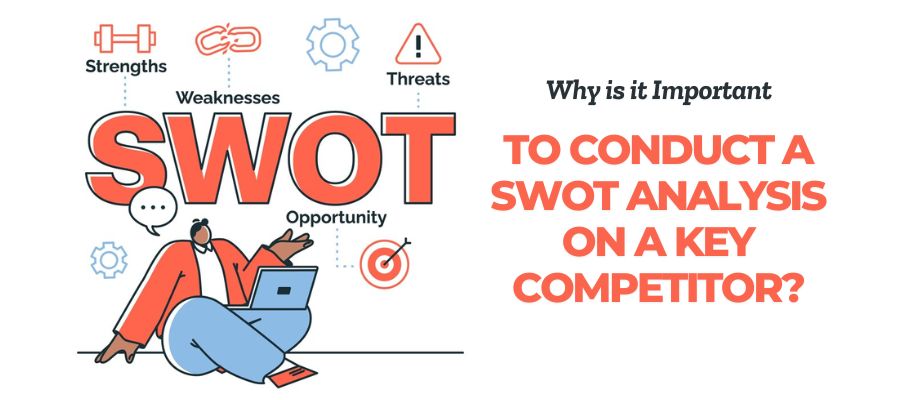A SWOT analysis is a helpful tool that helps you understand what your organization does well and where it can improve. It stands for Strengths, Weaknesses, Opportunities, and Threats. This guide will walk you through the steps to conduct a SWOT analysis, making it easier for you to make smart decisions for your organization.
Understanding the Basics of SWOT Analysis
SWOT analysis is a method used to evaluate a business’s strengths, weaknesses, opportunities, and threats. It helps organizations understand their position in the market. This analysis can be applied to a whole company, a specific product, or even a project.
Importance of SWOT Analysis
Conducting a SWOT analysis is crucial because it:
- Provides a clear picture of the current situation.
- Helps identify areas for improvement.
- Guides decision-making by highlighting potential risks and rewards.
Components of SWOT Analysis
A complete SWOT analysis includes four main parts:
- Strengths: What the business does well.
- Weaknesses: Areas where the business can improve.
- Opportunities: External chances to grow or improve.
- Threats: External challenges that could harm the business.
Benefits of SWOT Analysis
Using SWOT analysis offers several advantages:
- It is easy to understand and implement.
- It focuses on key factors affecting the business.
- It helps set future goals and strategies.
SWOT analysis is a powerful tool that can lead to better decision-making and strategic planning.
Preparing for Your SWOT Analysis
Before diving into your SWOT analysis, it’s crucial to define what you want to achieve. This could be evaluating a new product, improving customer service, or understanding market positioning. A clear objective helps focus your analysis and makes it more effective.
Gathering Necessary Data
Collecting the right information is key. Here are some sources to consider:
- Customer feedback and surveys
- Market research reports
- Internal performance data
- Competitor analysis
Choosing the Right Team
Involve a diverse group of people in your SWOT analysis. This can include:
- Team members from different departments
- Stakeholders who understand external factors
- Individuals with experience in data analysis
Utilizing SWOT Templates
Using a template can simplify your process. You can create a table with four quadrants:
| Strengths | Weaknesses |
| Opportunities | Threats |
This layout helps visualize your findings and keeps your analysis organized.
Remember, a successful SWOT analysis requires honesty and thoroughness. Take the time to dig deep into your organization’s strengths and weaknesses.
How to Do a Swot Analysis
A SWOT analysis is a strategic planning tool used to assess a company or project’s Strengths, Weaknesses, Opportunities, and Threats. Here’s how to do a SWOT analysis:
1. Strengths
- What it is: These are internal factors that give an advantage over competitors or help achieve goals.
- Questions to ask:
- What does the organization do well?
- What resources or unique advantages do we have?
- What is our competitive edge?
- Examples: Strong brand reputation, loyal customer base, proprietary technology, skilled workforce.
2. Weaknesses
- What it is: These are internal factors that hinder performance or put you at a disadvantage.
- Questions to ask:
- What could be improved?
- What resources do we lack?
- What areas need development?
- Examples: Limited market presence, poor customer service, outdated technology, lack of capital.
3. Opportunities
- What it is: These are external factors or trends that the organization can exploit to its advantage.
- Questions to ask:
- What are the emerging trends or market opportunities?
- Are there changes in technology, regulation, or the market that we can take advantage of?
- How can we leverage our strengths to create new opportunities?
- Examples: Expanding markets, technological advancements, regulatory changes, and partnerships.
4. Threats
- What it is: These are external challenges that could negatively impact the business.
- Questions to ask:
- What obstacles do we face?
- What are competitors doing that could harm us?
- Are there any changes in the market or regulations that could hurt us?
- Examples: Increasing competition, economic downturns, changes in consumer behavior, new regulations.
Steps to perform a SWOT Analysis:
- Gather a team: Include people from different areas of the business to get diverse perspectives.
- Brainstorm: Use the questions outlined above to fill in each section of the SWOT matrix.
- Analyze relationships: Look at how strengths can be used to take advantage of opportunities, how weaknesses could be mitigated to reduce threats, and so on.
- Prioritize actions: Identify key strategies based on the analysis to focus on moving forward.
A SWOT analysis helps businesses understand both internal and external factors that can impact their strategic decisions and goals.
Conducting the Internal Analysis
Identifying Strengths
Focus on what your organization does well to kick off your internal analysis. Recognizing strengths is crucial for leveraging them in your strategy. Here are some questions to consider:
- What unique skills do we have?
- What resources set us apart from competitors?
- Which products or services are most successful?
Recognizing Weaknesses
Next, it’s important to identify areas where your organization can improve. This step requires honesty and clarity. Consider these questions:
- Where do we struggle compared to others?
- What feedback do we receive from customers about our shortcomings?
- Are there resources we lack that hinder our performance?
Using Internal Data Sources
Gathering data is essential for a thorough analysis. Use various internal sources to support your findings:
- Employee surveys
- Financial reports
- Customer feedback
Creating a SWOT Matrix
Finally, organize your findings into a SWOT matrix. This visual tool helps you see the strengths and weaknesses side by side. Here’s a simple layout:
| Strengths | Weaknesses |
| Unique skills | Areas for improvement |
| Strong resources | Customer complaints |
| Successful products | Lacking resources |
Remember, this internal analysis aims to create a clear picture of your organization’s current state. This will guide your strategic planning and help you make informed decisions.
Evaluating External Factors

Spotting Opportunities
Identifying opportunities is crucial for growth. Here are some ways to spot them:
- Look for unmet customer needs.
- Monitor economic trends that could benefit your business.
- Identify gaps in the market that competitors have missed.
Understanding these opportunities can help you gain a competitive edge.
Identifying Threats
Threats are external challenges that can harm your organization. Consider these questions:
- What negative economic trends could impact us?
- Are there any emerging competitors we should be aware of?
- What regulatory changes might affect our operations?
Analyzing Market Trends
To stay ahead, analyze market trends by:
- Reviewing industry reports.
- Conducting surveys to understand customer preferences.
- Keeping an eye on competitor activities.
Considering External Data Sources
Utilizing external data sources can enhance your analysis:
- Economic forecasts for your industry.
- Social media trends to gauge public sentiment.
- Government reports on regulations and policies.
By regularly evaluating external factors, you can adapt your strategies and minimize risks.
Implementing and Acting on Your SWOT Analysis
Developing Strategic Plans
Once you have your SWOT analysis ready, it’s time to create a plan. Use your strengths to take advantage of opportunities. Here’s how:
- Identify your top strengths.
- Match them with the best opportunities.
- Set clear goals based on this combination.
Prioritizing Actions
Not all actions are equally important. Focus on:
- Urgent issues that need immediate attention.
- High-impact areas that can drive significant change.
- Long-term goals that align with your vision.
Monitoring Progress
Keep track of how well your plans are working. Consider:
- Regular check-ins to assess progress.
- Adjusting strategies based on what you learn.
- Celebrating small wins to keep the team motivated.
Revisiting and Updating SWOT Analysis
Your business environment changes, so should your SWOT analysis. Make it a habit to:
- Review your SWOT at least once a year.
- Update it based on new data or changes in the market.
- Use it as a living document to guide your strategy.
Regularly revisiting your SWOT analysis helps ensure that your strategies remain relevant and effective.
Conclusion
In summary, conducting a SWOT analysis is a smart way to understand your business better. By looking at your strengths, weaknesses, opportunities, and threats, you can make informed decisions. This process helps you see where you excel and where you need to improve. Remember, it’s not just a one-time task; revisiting your SWOT analysis regularly can keep you on track as your business grows and changes. So, take the time to do this analysis, and use it as a guide to help you succeed.
Frequently Asked Questions
Q. What does SWOT stand for?
SWOT stands for Strengths, Weaknesses, Opportunities, and Threats. It helps you analyze what your business does well and where it can improve.
Q. Why is a SWOT analysis important?
A SWOT analysis is important because it helps you understand your business better. It shows you what you’re good at, what you need to work on, and what chances you can take.
Q. How do I start a SWOT analysis?
To start a SWOT analysis, first decide what you want to focus on. Then, gather a team to discuss your strengths, weaknesses, opportunities, and threats.
Q. Can I use a template for my SWOT analysis?
Yes! Using a template can make it easier to organize your thoughts. You can find many free templates online.
Q. How often should I do a SWOT analysis?
It’s a good idea to do a SWOT analysis at least once a year or whenever you’re planning something new. This keeps your information up-to-date.
Q. What are some common mistakes in SWOT analysis?
Common mistakes include being too vague, not using enough data, and letting personal opinions take over instead of focusing on facts.
Also Read: HellCage





